If you haven’t read part one yet, read it first before continuing!
Where we left off, I had gone back to my hotel to relax and freshen up. After awhile, I headed down to the harbor for some dinner (PROTIP: don’t bother — it’s overpriced) and see what sort of night life the locals enjoyed:
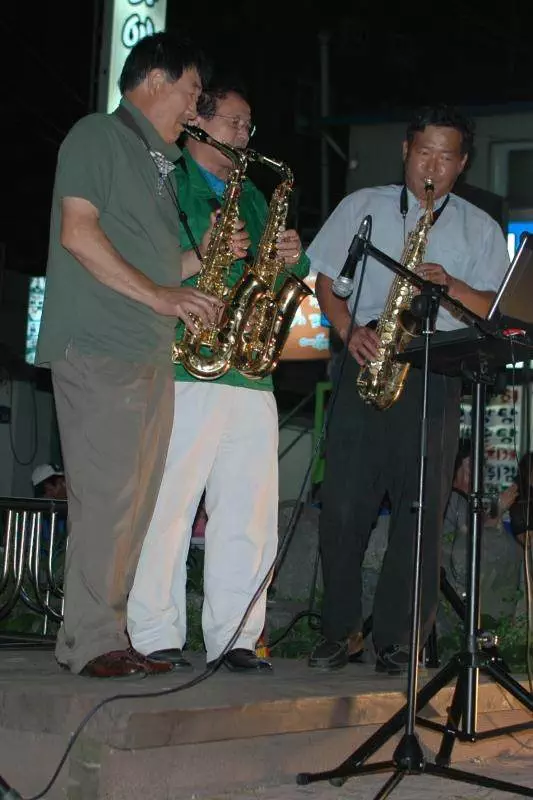
While I couldn’t tell they do this every night, the trio of saxophonists seemed pretty comfortable on the harbor’s stage.
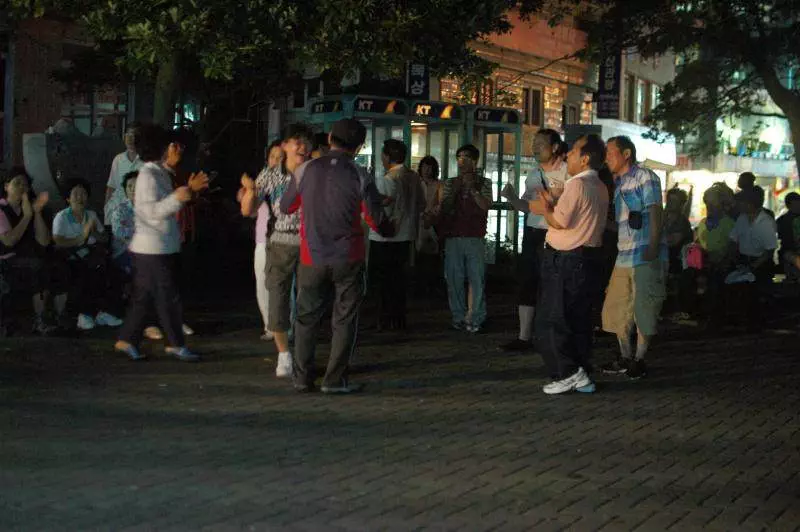
Some seemed fine with sitting and enjoying the 트로트 (trot, or traditional Korean songs), but a few more intoxicated people got up and danced. After awhile, listening to trot got a bit boring, so I meandered down by the harbor. On either side of the harbor from the mountainside is a set of trails — plenty of beautiful views even at night:
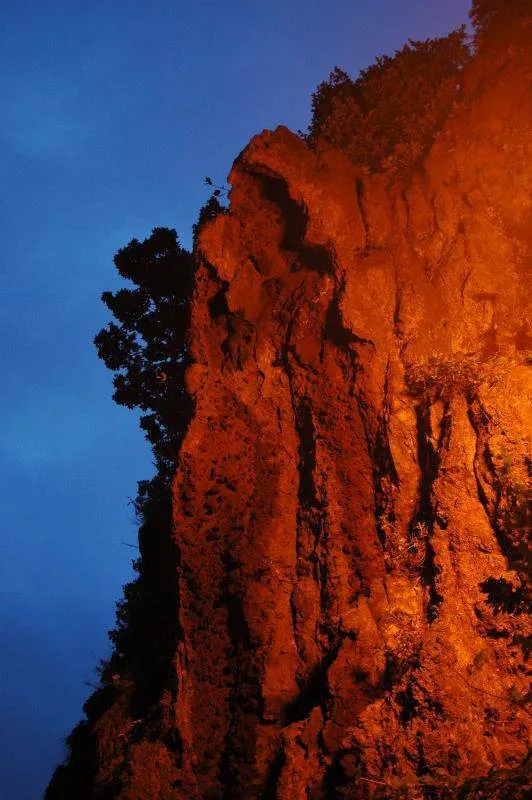
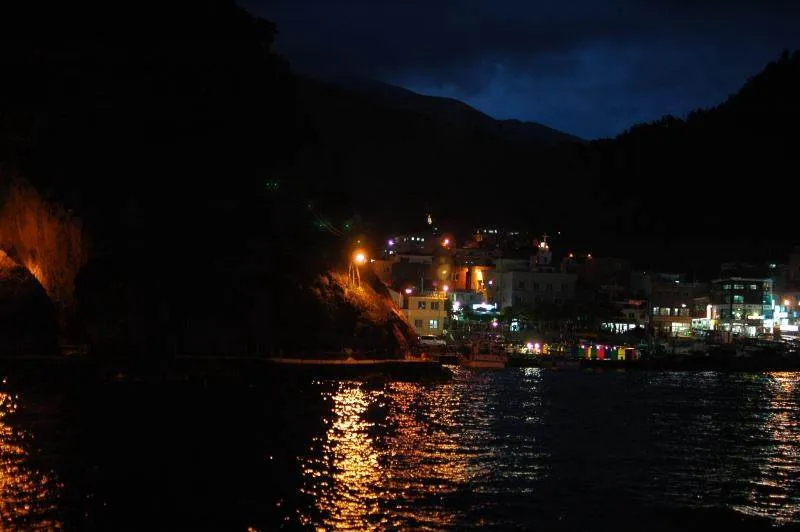
A look back at the town and harbor. Time to call it a night…
Waking up early was not part of the plan. Thus, when the sun began peeking in through the window, I blocked the window with an extra blanket and rolled back over. Sorry, but it’s my vacation, and waking up at 6am is not part of the fun.
After waking up and packing up, my first stop was the Yaksu park (약수공원) area. A ten minute walk uphill from the harbor, it’s one of the most accessible destinations on Ulleungdo.
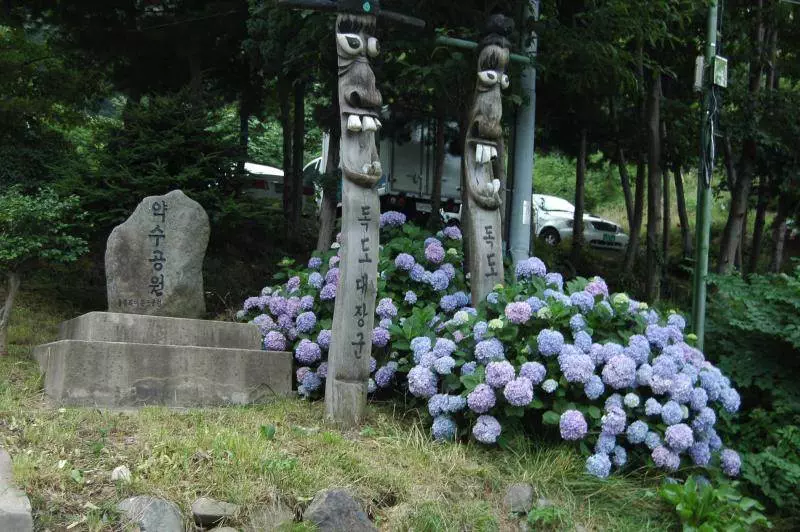
The 장승 (jangseung) (odd faced poles) welcome you to the park. Look left after climbing up the hill for an additional treat:
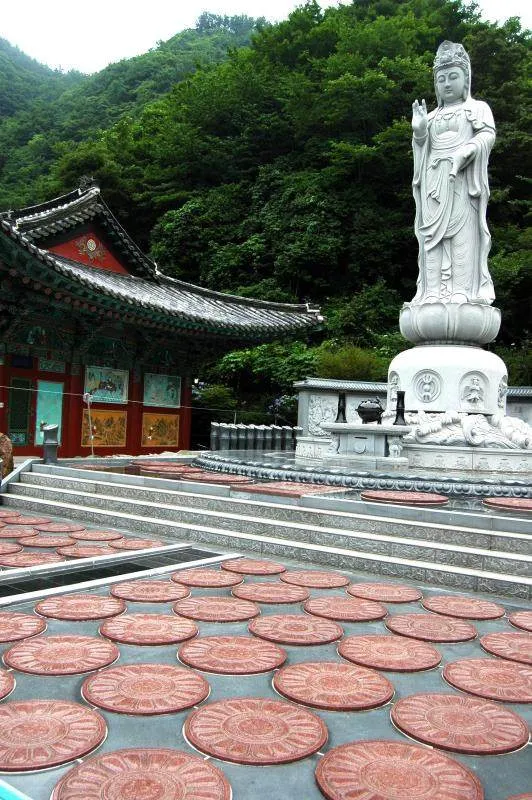
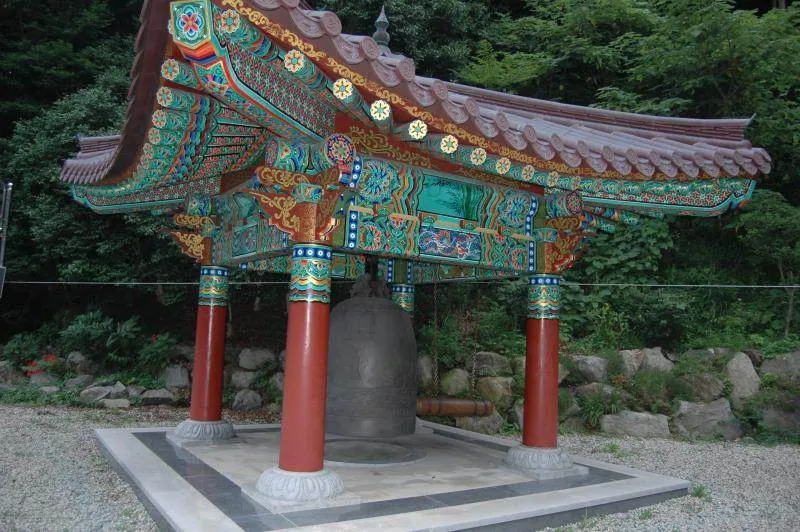
해도사 — Haedosa or Haedo temple. A fairly new and small facility, there was nobody around except for a few passersby. No matter — appreciating beauty sometimes requires nothing other than the sights themselves.
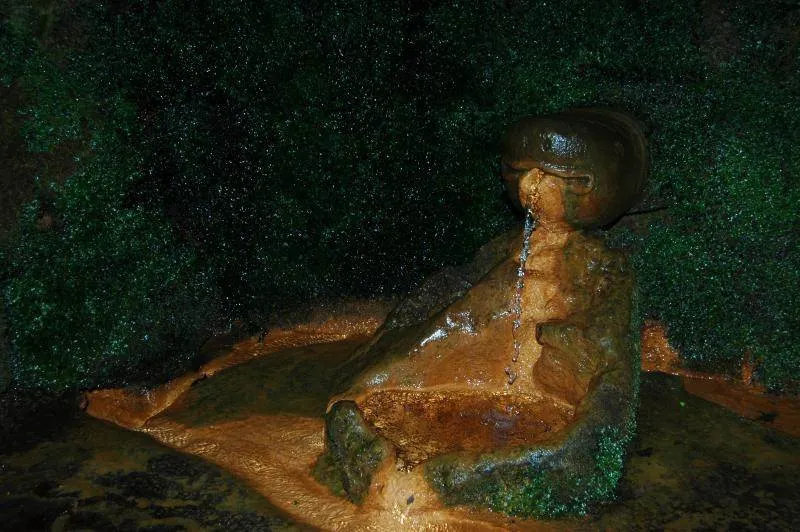
The first major attraction of the park is the naturally flowing mineral water (약수, yak-su) — slightly carbonated and bitter, but supposedly ‘well being’ — that classic Konglish way of saying it’s healthy or good for you. Bring your own bottle, or sip out of the communal cups with a handle.
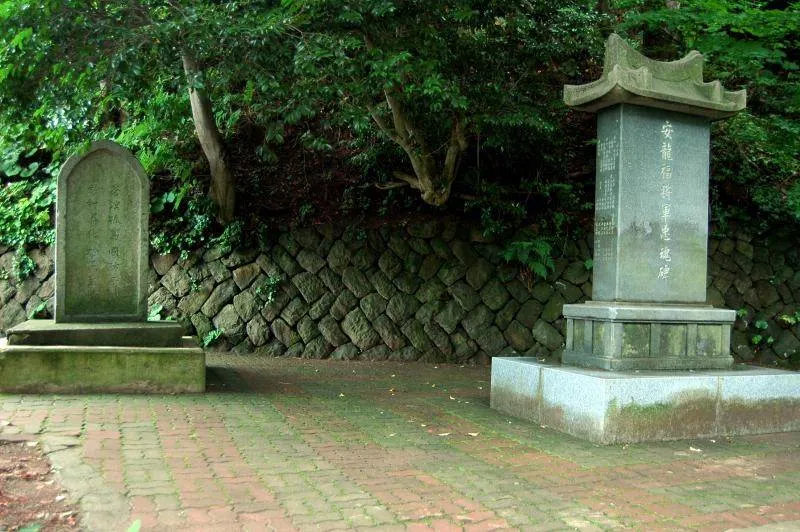
Walk about the area to see these two monuments — two mysteries to this English speaker, as no description is around to learn more.
The area also features a museum for Ulleungdo’s heritage (향토사료관 — literally, ‘local museum’):
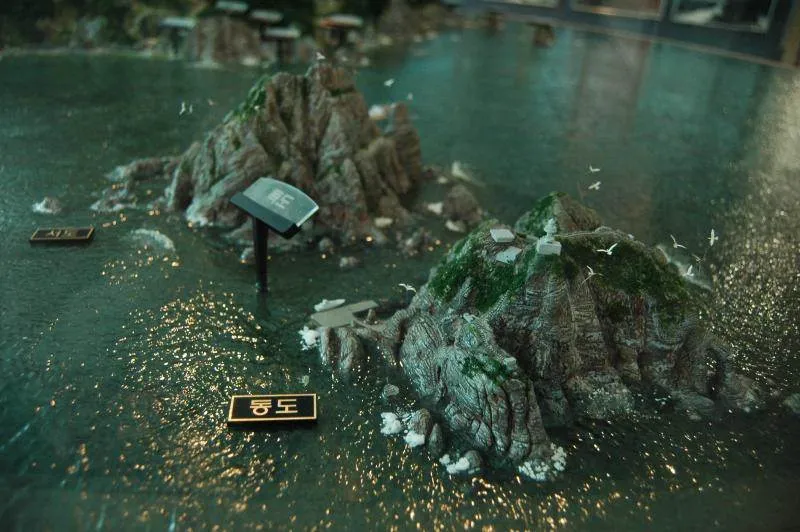
A sign of things to come — Both Dokdo and Ulleungdo are featured in this view.
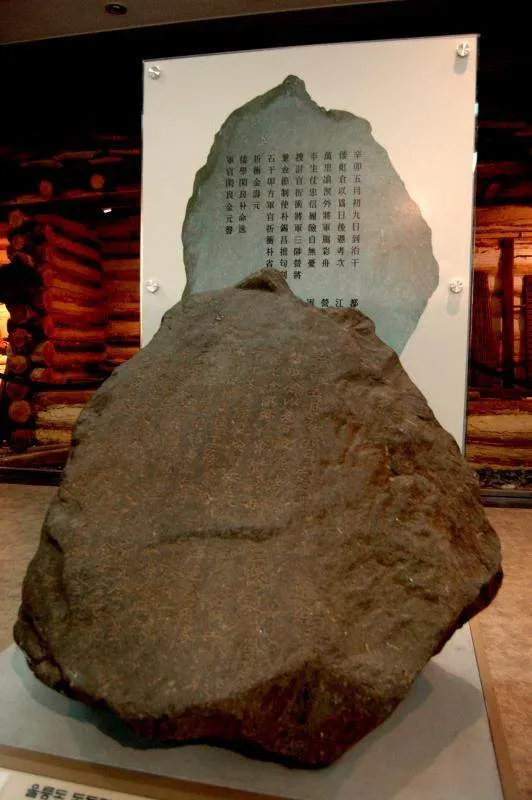
This monument was discovered in 1937 during construction of Dodong harbor. According to the engravings on the rock, the Joseon dynasty had a policy of suto, of moving islanders to the mainland. From January 1711 to December 1712, a general named Park Seok Chang was responsible for forcing the islanders to move. This monument is thought to be the list of people that was forced to move to the mainland.
People lived on Ulleungdo before at least 512 A.D., when the Silla dynasty started received tributes from Usan State (present-day Ulleungdo). A few years later in 1998, a research team from Seoul National University discovered three monuments and pottery surmised to be from this era. Although there’s plenty more to learn about the history of the island’s original natives, there are more displays of life on the island than descriptions of its history.
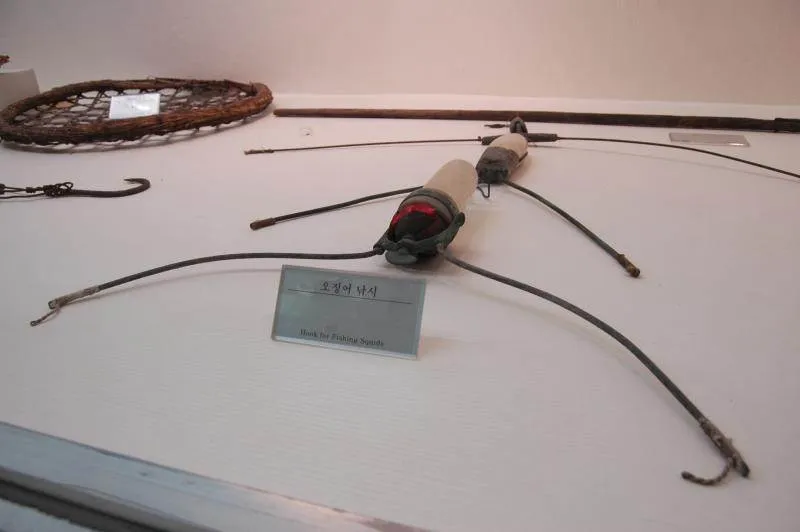
A hook for fishing squid; not pictured are a number of other fishing tools and pottery remnants.
Don’t forget about the Dokdo museum on Ulleungdo — I’ll write up a separate post about that area.
With time running short until the ferry home, I head back to the bus stop and wait for the next bus heading east. While waiting, I went down to the harbor and shot a few seagulls flying near the harbor:
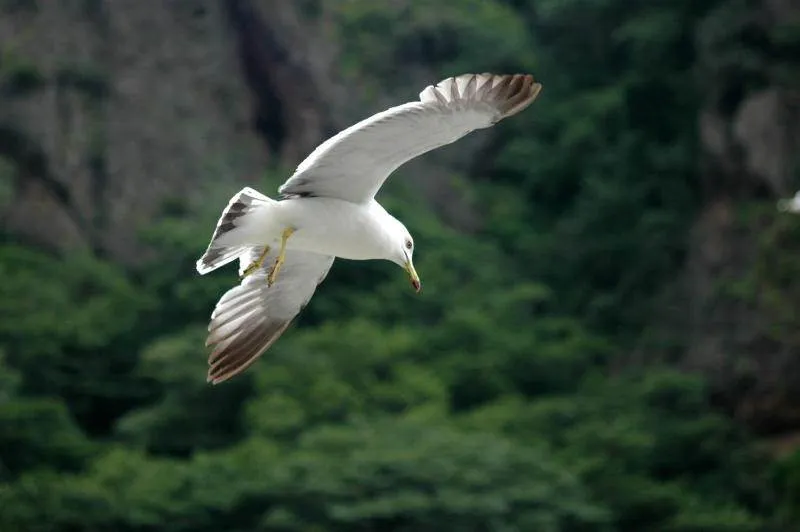
Click to see part 3 of the Ulleungdo trip, including a hike up to one of the island’s waterfalls.
Directions to Yaksu Park: Get to Ulleungdo. From the port, walk uphill towards town. Just past the tourist information center, there are two ways up — take the left one. Pass the bus stop, then follow the road as it bends right, then take the first left after the police station. It’s another 200 meters up a steep hill, and your calves will probably be thankful for a break somewhere along the way.


